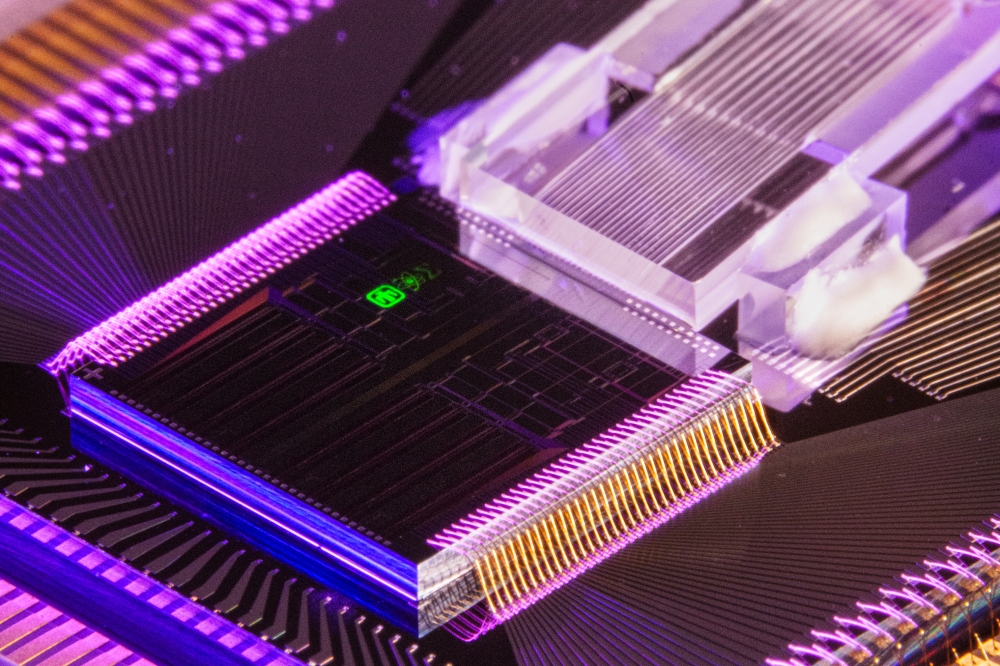Atom interferometry performed with silicon photonics

Researchers report the first demonstration of the quantum sensing technique, representing a milestone in the development of miniaturised GPS-independent quantum navigation devices
Researchers from Sandia National Laboratories have reportedly for the first time used silicon photonic microchip components to perform a quantum sensing technique called atom interferometry, an ultra-precise way of measuring acceleration. The scientists say this is the latest milestone towards developing a kind of quantum compass for navigation when GPS signals are unavailable. The team’s findings, and their introduction of a new high-performance silicon photonic modulator, have been published as the cover story in the journal Science Advances.
“Accurate navigation becomes a challenge in real-world scenarios when GPS signals are unavailable,” said Sandia scientist Jongmin Lee.
In a war zone, these challenges pose national security risks, as electronic warfare units can jam or spoof satellite signals to disrupt troop movements and operations. But quantum sensing offers a solution.
“By harnessing the principles of quantum mechanics, these advanced sensors provide unparalleled accuracy in measuring acceleration and angular velocity, enabling precise navigation even in GPS-denied areas,” Lee said.
A modulator at the centre of a chip-scale laser system
Typically, an atom interferometer is a sensor system that fills a small room. A complete quantum compass — more precisely called a quantum inertial measurement unit — would require six atom interferometers.
But Lee and his team have been looking for ways to reduce its size, weight, and power needs. The scientists say they have already replaced a large, power-hungry vacuum pump with an avocado-sized vacuum chamber and consolidated several components usually delicately arranged across an optical table into a single, rigid apparatus.
The new modulator is the centrepiece of a laser system on a microchip. Rugged enough to handle heavy vibrations, it would replace a conventional laser system typically the size of a refrigerator.
Lasers perform several jobs in an atom interferometer, and the Sandia team uses four modulators to shift the frequency of a single laser to perform different functions. However, modulators often create unwanted echoes called sidebands that need to be mitigated.
According to the researchers, Sandia’s suppressed-carrier, single-sideband modulator reduces these sidebands by an unprecedented 47.8 decibels — a measure often used to describe sound intensity but also applicable to light intensity — resulting in a nearly 100,000-fold drop.
“We have drastically improved the performance compared to what’s out there,” said Sandia scientist Ashok Kodigala.
More affordable and mass-producible silicon devices
Besides size, cost has been a major obstacle to deploying quantum navigation devices. Every atom interferometer needs a laser system, and laser systems need modulators. “Just one full-size single-sideband modulator, a commercially available one, is more than $10,000,” Lee said.
Miniaturising bulky, expensive components into silicon photonic chips helps drive down these costs. “We can make hundreds of modulators on a single 8-inch wafer and even more on a 12-inch wafer,” Kodigala said.
And since they can be manufactured using the same process as virtually all computer chips, “This sophisticated four-channel component, including additional custom features, can be mass-produced at a much lower cost compared to today’s commercial alternatives, enabling the production of quantum inertial measurement units at a reduced cost,” Lee said.
As the technology gets closer to field deployment, the team is exploring other uses beyond navigation. Researchers are investigating whether it could help locate underground cavities and resources by detecting the tiny changes these make to Earth’s gravitational force. They also see potential for the optical components they invented, including the modulator, in LiDAR, quantum computing, and optical communications. “I think it’s really exciting,” Kodigala said. “We’re making a lot of progress in miniaturisation for a lot of different applications.”
Image credit: Craig Fritz



































